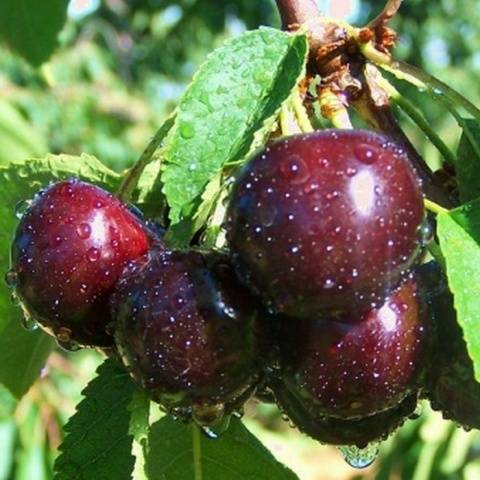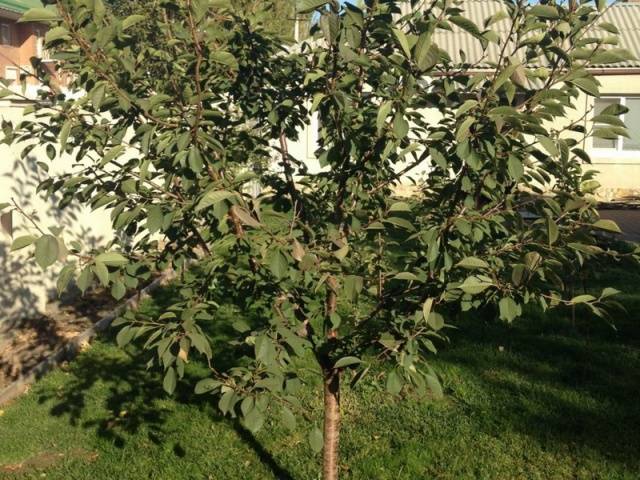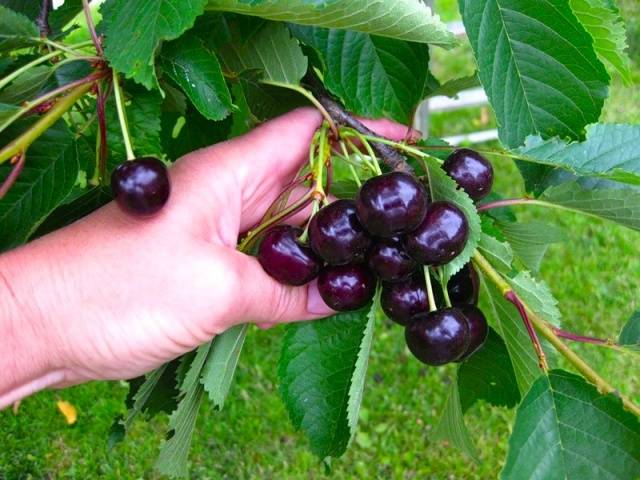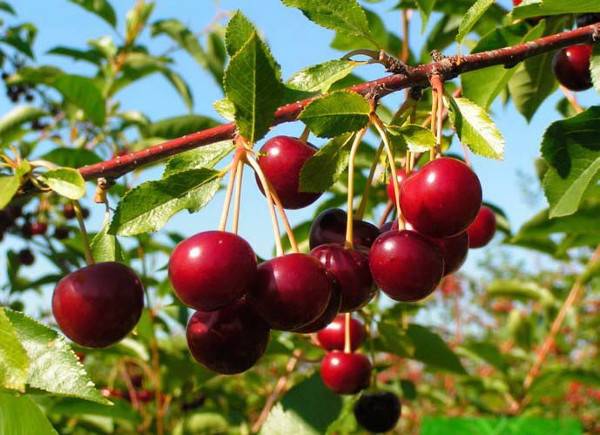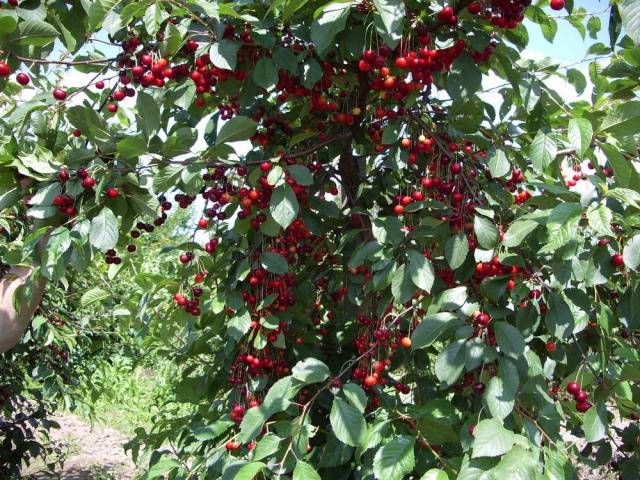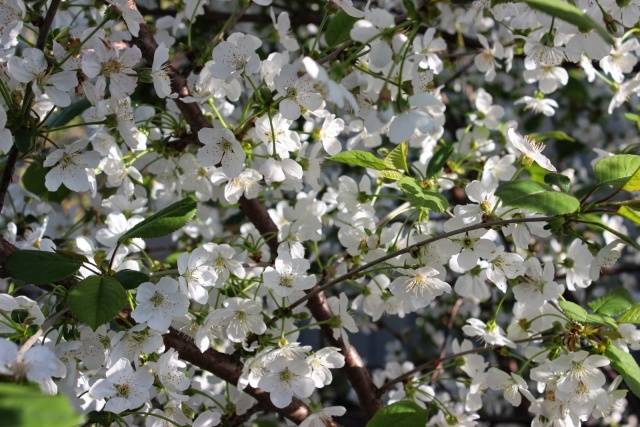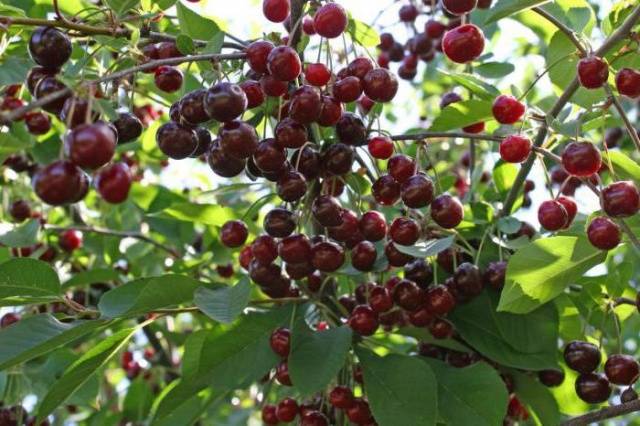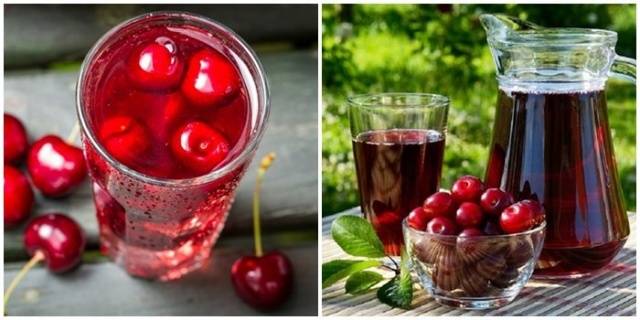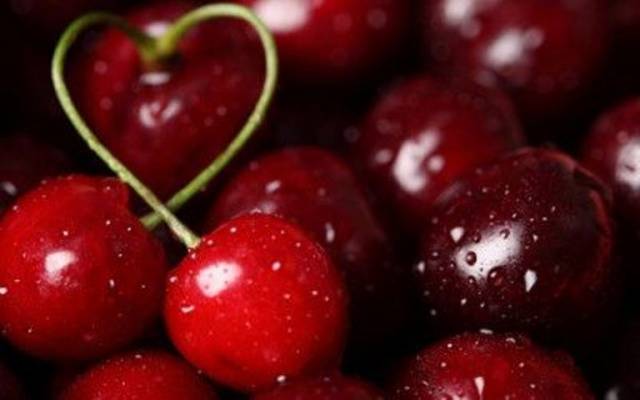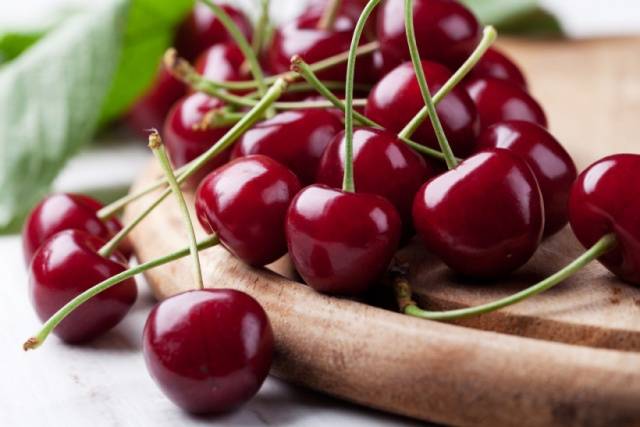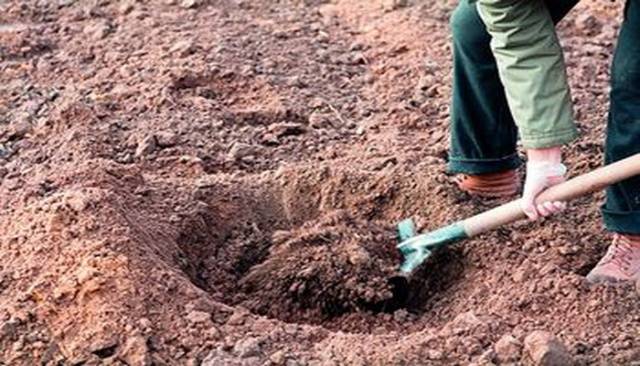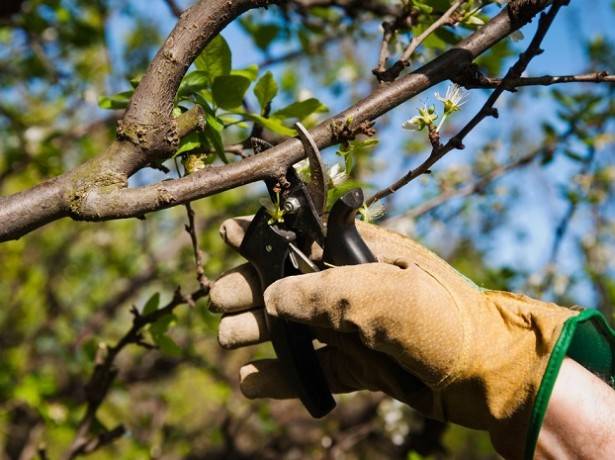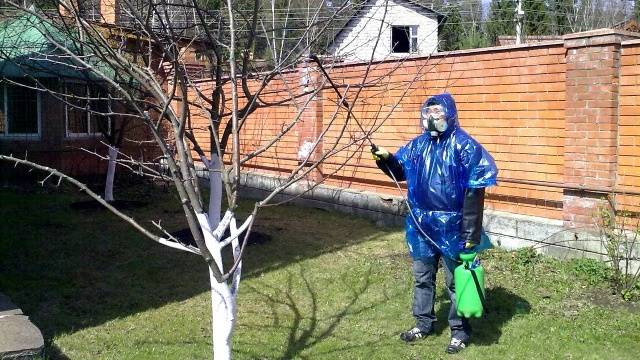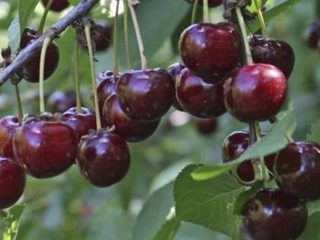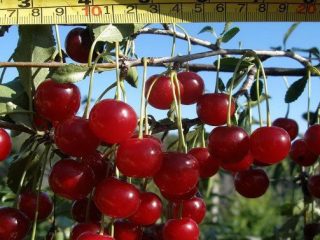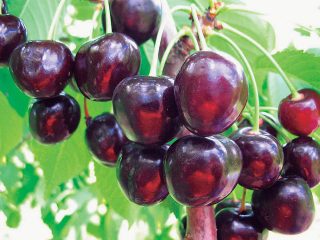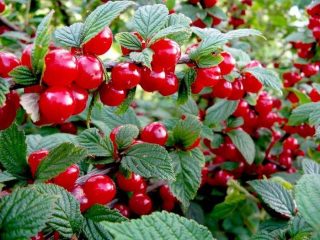On the territory of the former Soviet Union, cherry orchards occupied 27% of all fruit plantations. This culture was second only to the apple tree in number. Today, the number of cherry trees has greatly decreased due to coccomycosis. This disease spreads quickly, without treatment, the culture dies. But we can no longer imagine a private household on which cherries do not grow. Therefore, the task of creating cultivars resistant to coccomycosis came to the fore. Cherry Novella is one of the best varieties of domestic selection, at the same time possessing high commercial qualities and resistance to fungal diseases.
Breeding history
Cherry of the Novella variety was created by the Oryol All-Russian Research Institute of Breeding of Fruit Crops in 1995. It was adopted by the State Register in 2001. In addition, in 1999 the variety received a patent No. 0466, which expires in 2034.
The parent cultures of Novella cherry are the Rossoshanskaya griot and the Renaissance cerapadus, which is a donor of coccomycosis resistance.
Description of culture
Although the variety is usually attributed to cerapadus, a photo of the Novella cherry tree shows that it bears little resemblance to bird cherry.
The cultivar took a powerful root system from the pollinator. Cherry Novella forms a medium-sized tree about 3 m high. The raised crown is spreading, round, with straight branches of brownish-brown color. With age, the shoots become bare.
Obovate leaves are serrated, with a pointed base and a tip. Their surface is flat, matte, dark green. The petiole is up to 3 cm long along the entire length of anthocyanin coloration. The buds are slightly deviated from the shoots.
Flat white flowers clustered together in 4 on bouquet twigs or last year's growth. Novella cherries are one-dimensional, weighing up to 5 g each. Their shape resembles a ball squeezed at the top and bottom. The funnel is shallow, with a small notch at the crown. Novella cherry is a typical griot. The berry, juice and pulp are colored dark red. When fully ripe, the fruits do not crack and become almost black.
The separation of the berry from the stalk is average. A small (5.5% of the total weight of a cherry) stone is yellow, round, easily separated from the pulp. The tasters rated the taste of the juicy sweet and sour berry at 4.2 points.
Brief characteristic of the variety
Cherry Novella is a potential long-liver. With regular care in the Central Black Earth Region, it gives bountiful harvests and does not get sick.
Drought resistance, winter hardiness
The characteristic of the Novella cherry variety as frost-resistant makes sense only in the region recommended for growing crops - Central Black Earth. The bark and cambium perfectly withstand low temperatures, but the buds in a particularly harsh winter can freeze.
The drought resistance of Novella is satisfactory, but not outstanding. In hot summer, the tree must be watered 1-2 times a month.
Pollination, flowering period and ripening times
The Novella variety blooms in mid-May. Depending on weather conditions, the first buds usually open from the 10th to the 18th. The berries ripen at the same time, in the early stages. Harvesting of Novella cherries begins after July 15th.
The variety is partly self-fertile. The best harvest can be harvested in the presence of pollinators - cherries Griot Ostgeimsky, Shokoladnitsa, Vladimirskaya. They must be planted at a distance not exceeding 40 m from Novella.
Productivity, fruiting
Cherry Novella begins to bear fruit 4 years after planting. The berries ripen at the same time in mid-July. According to the FGNBU VNIISPK, the average yield per hectare is 77.6 centners, the highest is 99.8 centners. These indicators are considered very good, especially since the tree does not grow tall.
The fruiting of the Novella cherry variety is unstable. In those years when flower buds are exposed to low temperatures, it produces few berries.
The Novella variety is relatively young - it was registered only in 2001. Nevertheless, scientists argue that this cherry is a potential long-liver, which, with minimal care, will bear fruit until very old age. Based on the habit of the tree, it can be concluded that its lifespan will be about 20 years.
Scope of berries
The Novella variety has a universal purpose. Its sweet and sour black berries can be eaten fresh, made jam, desserts and other sweets. Like all griots, the fruits of Novella are juicy. Thanks to the genes of the Maak bird cherry, they have a delicate bird cherry aroma. Juices, wines, liqueurs and other drinks are especially tasty products of Novella cherry processing.
Disease and pest resistance
The Novella variety is a cerapadus, therefore, it is related to bird cherry. Because of this, it is less likely to be affected by pests than other cherries. Resistance to coccomycosis, moniliosis and other fungal diseases is high.
Advantages and disadvantages
The Novella variety is one of the best modern varieties. It is too early to judge about all its merits - it was bred not so long ago. But Novella cherry received a protective patent for 35 years, which speaks of its exceptional qualities. Among the positive aspects of the variety, it should be noted:
- High resistance to coccomycosis and other fungal diseases.
- Partial self-fertility.
- Potentially long productive life of the tree.
- High productivity.
- Dessert taste and universal purpose of berries (score - 4.2 points).
- High resistance to low temperatures.
- Amicable ripening of berries.
- Small bone.
- The berries are large.
- Fruits are resistant to cracking.
- The berries have an attractive appearance, one-dimensional.
Among the disadvantages:
- The frost resistance of Novella cherry buds is average.
- Instability of fruiting.
- Old branches are bare.
- The inability to grow the Novella variety in the northern regions.
- The fruit does not always break cleanly from the stalk.
Landing features
Requirements for the planting and place of cultivation of Novella cherries are not much different from those that are needed for other varieties. This is little influenced by the Maak bird cherry genes present in the cultivar's pedigree.
Recommended timing and selection of a suitable location
In the Central Black Earth Region, recommended for growing Novella cherries, planting is carried out in early spring, before bud break. In the south of Russia and Ukraine, the tree is recommended to be placed on the site in the fall, after leaf fall.
For cherries, the best planting site will be the southern sunny side of the fence or buildings, the western side of the hill with a minimum slope (ideally 8%, no more than 15%). The soil should be fertile, loose, neutral. It is impossible for underground waters to be located closer than two meters to the surface.
What crops can and cannot be planted next to cherries
Next to the Novella variety, it is better to plant pollinating cherries Shokoladnitsa, Griot Ostgeimsky or Vladimirskaya. Other stone fruit breeds will be good neighbors. You can plant any fruit trees in the immediate vicinity, the main thing is that their crowns do not shade each other.
Linden, maple, walnut (especially walnut), birch and linden are bad neighbors for cherries. The culture is not friendly with black currants, and sea buckthorn, blackberries and raspberries take away moisture and nutrients from it.
When the cherry is rooted, any shade-tolerant ground cover with a shallow root system that grows in your area can be planted in the near-stem circle. They will protect the topsoil from overheating and rapid evaporation of moisture.
Selection and preparation of planting material
Seedlings should not be bought from the hands - you risk getting a plant overfed with stimulants, not to mention varietal compliance. Even high-quality planting material can be grown in the southern region and not adapted to life in your conditions.
It is necessary to ensure that the root system is well developed. The height of the central shoot for an annual seedling should not exceed 80 cm, a two-year-old can stretch up to 110 cm. If the wood is well ripe, the Novella cherry stem is painted in a grayish-brown color.
Landing algorithm
Before planting, the cherry root is soaked for 3 hours or more. It is better to prepare the hole in the fall, the approximate dimensions are 40-60 cm deep, the diameter is about 80 cm. The excavated earth is not suitable for filling the root. A bucket of humus, 50 g of potassium salt and superphosphate each, is added to the top layer of soil, taken out during the preparation of the planting pit. Acidic soils need lime, overly dense soils need sand.
Cherries are planted according to the following scheme:
- A peg is driven in from the side of the center.
- A seedling is placed in the middle of the planting pit. Gradually fill it with fertile soil, ramming it with a shovel stem. The root collar should remain above the soil surface, rising 5-8 cm.
- A barrier is formed around the hole from the remaining earth.
- The seedling is tied to a peg and watered with 2-3 buckets of water.
- The soil is mulched with humus.
Follow-up care of the culture
A young cherry, planted in spring, needs to be watered well throughout the season. The root must receive enough moisture to settle well and overwinter successfully. When the earth dries up, it is loosened, all weeds are removed. In subsequent years, watering is needed in the hot summer. Water charging is carried out in autumn.
The best fertilizers for cherries are cattle waste products and ash. Pig manure should never be used. If you feed the crop with mineral fertilizers, nitrogen is given in the spring, potassium and phosphorus in the fall. The latter substance is needed in small quantities.
The Novella variety tends to expose old branches. To form a beautiful tree and increase yields, they need to be shortened. It is also necessary to regularly carry out sanitary and crown-brightening pruning.
In the south and in the Central Black Earth Region, Novella does not need winter shelter. To protect against hares, the stem is wrapped in burlap or tied with straw.
Diseases and pests, methods of control and prevention
The Novella cherry is highly resistant to fungal diseases, in particular, coccomycosis. Thanks to bird cherry genes, its susceptibility to pests is lower than that of other cultivars. This does not mean that the variety is immune to insects and diseases.Recommendations for preventive treatments are given below.
Problem | External signs | Prevention measures |
| Diseases |
|
Coccomycosis | The spots on the leaves turn into holes over time. A plaque appears on the reverse side. By the middle of summer, diseased leaves fall | In the spring, when the buds open, cherries are treated with a copper-containing preparation, after leaf fall - with iron vitriol. In autumn, plant residues are removed and burned. Cherries are pruned regularly |
Moniliosis | The cherry looks burnt. After the withering of flowers and leaves, whole branches die | Prevention is the same as for coccomycosis. Diseased branches are removed to healthy wood, the cuts are covered with garden pitch |
| Pests |
|
Aphid | Small oblong flying insects of brown or green color suck sap from the cells of young leaves and shoots, secreting a sticky secret | Fighting ants. Affected trees are treated with bifenthrin |
Cherry Sawer | Leech-like larvae gnaw holes in the leaves. | They carry out sanitary and clarifying trimmings, in the spring and autumn they carry out preventive treatments with insecticides. When the larvae appear, the cherry is sprayed with Aktelik |
The Novella variety is a promising cherry with high resistance to fungal diseases. In the current situation, when entire gardens are dying from coccomycosis, it is difficult to overestimate its importance for domestic horticulture. If we add here the high taste and marketability of the fruits, then it is obvious that Novella cherry is a welcome guest on any site.
Testimonials
